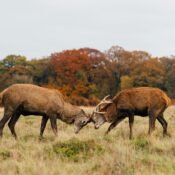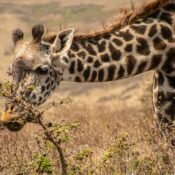
Tanzania’s Lakes: Explore the Beauty and Diversity of Inland Water
Tanzania is a country which is located in East Africa, the place is widely known for its stunning landscapes, rich biodiversity, and huge wilderness. Tanzania is one of the most biodiverse and beautiful countries, amid all its natural treasures, the Tanzania lakes grab the most attention, representing beauty, supporting diverse biodiversity and serving as an important water source for the people.
From huge freshwater Tanzania lakes, which are surrounded by lush greenery and rapidly growing wildlife, to rare alkaline lakes, each of the lakes in Tanzania showcases a unique ecosystem. Let us dive into the exploration of lakes in Tanzania, revealing their charm, diverse wildlife, and role in local communities.
-
Lake Victoria: The Heart of East Africa
It is the largest lake in Africa and the world’s largest tropical lake, the lake victoria lies at the heart of East Africa stretches across Tanzania, Uganda, and Kenya. Tanzania part of the lake is situated in the northwest, where cities like Mwanza and Bukoba depend on it for fishing purposes, trade, and water supply.
- Ecology and Wildlife: The lake sustains an extraordinary variety of fish species, including the iconic Nile perch, which has remodelled the lake’s ecosystem. The place is also home to other freshwater fish, which are very important for local fishing communities.
- Some of the Challenges: Lake Victoria faces many environmental issues. Pollution from urban settlements, agricultural runoff, and the unwanted water hyacinth have impacted this lake Tanzania Africa. Many efforts are going on to control pollution and restore the ecological balance of the lake with both local and international organisations engaged.
The amplitude and resources of Lake Victoria make it a vital resource in Tanzania’s social and economic landscape, and ongoing conservation efforts are going with the aim of preserving it for future generations.
-
Lake Tanganyika: Africa’s Deep Gem
Lake Tanganyika is the second deepest lake in the world and one of the oldest lakes on Earth, it stretches along the western border of Tanzania. The symbol of this Tanzania lake’s remarkable biodiversity is its crystal-clear waters.
- Unique Species: Lake Tanganyika has over 350 species of fish. Most of the fish found here are endemic, meaning they cannot be found anywhere else in the world. For example, cichlids are famous for their vibrant colours and fascinating behaviour.
- Diverse Activities: The lake has crystal clear water, which allows excellent visibility and makes it a heaven for underwater enthusiasts. You can explore other water activities such as snorkelling, diving, and fishing.
- Conservation and Sustainable Fishing: The ecosystem system of the lake is quite fragile, it faces challenges from climate change and overfishing to safeguard the lake’s biodiversity conservation organisations work with local communities to encourage sustainable fishing practices., Lake Tanganyika is a destination rich in underwater
For those looking for natural beauty and adventure, Lake Tanganyika is a place which is rich in underwater wonders and stunning views, with conservation measures in place to make sure that its treasures are preserved.
-
Lake Malawi: A Biodiversity Hotspot
Lake Malawi which is also known as Lake Nyasa in Tanzania is part of the Great Rift Valley and stands among the most biodiverse lakes around the world. The lake is shared by three countries Malawi, Mozambique, and Tanzania, with the northeastern part of the lake situated in the Tanzanian area.
- Cichlid Diversity: With the lake Malawi has the most number of species of fish than any other lake in the world, with the high ratio of cichlids. The clear, shallow waters and rocky coastlines of the lake give an ideal habitat for these fish which makes it a perfect spot for water activities such as diving and snorkelling.
- Tourism and Culture: The town beside Lake Malawi in Tanzania is known for its friendly communities with their regular lifestyle resting on fishing and agriculture Tourists are drawn out to the lake’s sandy beaches, local markets, and the intense fishing culture.
- Environmental Concerns: The lake’s health has been threatened by Overfishing, climate change, and deforestation in the nearby areas. Sustainable tourism aims to safeguard the lake while offering economic opportunities to residents.
Lake Malawi’s beauty, cultural importance, and ecological diversity make it an unavoidable destination for both travellers and researchers.
-
Lake Natron: A Spectacular Alkaline Lake
Lake Natron is situated near the Kenyan border, it is one of the most unusual and noticeable of all Lakes in Tanzania. It is widely known for its alkaline waters due to sodium carbonate deposits, and the lake’s vibrant red and pink tone provides an unreal landscape.
- Breeding Ground for Flamingos: Lake Natro act as the main breeding ground for lesser flamingos, drawing these birds in larger numbers. The lake’s salty waters are hostile to many predators, offering a safe place for flamingos.
- A Unique Ecosystem: Lake Natro alkaline waters are home to extremophile microorganisms that thrive in these harsh conditions, building a unique ecosystem. These microorganisms play a part in the lake’s pinkish-red colour, particularly during the dry season when water levels decrease.
- Challenges of Conservation: The ecosystem of the lake natron is delicate and exposed by industrial projects like soda ash mining. Many conservation groups have supported the lake’s protection, emphasising its ecological importance for flamingos and the surrounding communities.
Lake Natron is a noticeable example of Tanzania’s geological diversity and serves as a pivotal habitat for flamingos. Its unreal appearance and ecological importance make it a natural wonder.
-
Lake Eyasi: A Cultural Oasis
Lake Eyasi is a seasonal salt lake in northern Tanzania, it is surrounded by various Indigenous communities, including the Hadza and Datoga people. The lake gives a glance into the cultural diversity of Tanzania, where lies the blend of human history and nature.
- Hadza and Datoga Cultures: The Hadza are one of the last hunter-gatherer tribes in East Africa, and the Datoga are shepherds with a special blacksmithing tradition. Their traditional ways of life are closely connected to the lake and its surrounding landscape.
- Ecology and Landscape: As Lake Eyasi is a seasonal lake its water levels change around the year, which attracts migratory birds and other wildlife when the water is ample.
- Responsible Tourism: You can also engage yourself in the cultural experiences of the lake Eyasi such as bush walks with the Hadza, learning about Datoga crafts, and birdwatching. Tourism stresses respectful involvement with local cultures, making sure that their heritage is preserved.
Lake Eyasi strikes out as a unique destination where Tanzania’s natural and cultural landscapes meet, providing travellers with an uncommon vision of traditional ways of life.
-
Lake Manyara: A Birdwatcher’s Paradise
Lake Manyara lies within Lake Manyara National Park, it is a shallow soda lake in the Great Rift Valley. It is known for its rich birdlife, it is especially famous among birdwatchers and nature enthusiasts.
- Birdlife and Flamingos: Lake Manyara is home to thousands of flamingos which create a pink cast beside its shores. The lake also draws over 400 species of birds, including the likes of pelicans, storks, and kingfishers.
- Diverse Wildlife in Surrounding Park: The lake is surrounded by Lake Manyara National Park which is famous for its tree-climbing lions, large elephant herds, and baboons. The blend of wildlife and birdlife makes it a special destination for safari-goers.
- Ecological Balance: The park’s ecosystem heavily depends on Lake Manyara as a vital water source, particularly during the dry seasons.
Lake Manyara’s vivid birdlife and scenic setting make it a delightful spot within Tanzania’s natural heritage, drawing bird lovers and photographers from all over the globe.
-
Lake Rukwa: A Remote Wildlife Haven
Lake Rukwa situated in southwestern Tanzania is a large, shallow, and usually unnoticed lake that gives an unspoiled wilderness experience. It is surrounded by mountains and small savannas which makes it a haven for wildlife lovers.
- Ecology and Wildlife: The ecosystem of the lake sustains diverse wildlife including the likes of hippos, crocodiles, and a variety of bird species. The remoteness and seclusion of this lake help in preserving its natural habitat.
- Challenges and Conservation: Lake Rukwa faces various challenges from human activities such as agriculture and mining, which threaten the quality of its water. Conservation organizations work tirelessly to safeguard the lake’s ecosystem while balancing local agricultural needs.
For those looking to explore little-known lakes in Tanzania, Lake Rukwa offers you a peaceful retreat, rich wildlife, and breathtaking landscapes away from the usual tourist routes
Conclusion
In conclusion, the lakes in Tanzania are exceptional and distinct sites, celebrated for their remarkable ecology, history, and natural beauty. From the vibrant communities around Lake Tanzania Africa to the thriving fish populations in Lake Victoria, these lakes are natural wonders central to the welfare of the country’s people. Not only do they include the scenic flamingos along the shores of Lake Natron with their distinctive alkaline appearance, but they also represent significant cultural aspects, like Lake Tanzania Africa Lake Eyasi, cherished by the Hadza and Datoga people of Tanzania.
However, leaving these lakes in Tanzania unprotected poses environmental problems. Pollution, overfishing, and climate change threaten the delicate ecosystems, fishing grounds, and aquatic resources, though local and international organizations are striving to safeguard these areas for future generations. The lakes in Tanzania, extending from Lake Manyara’s birdwatcher paradise to the secluded Tanzania lakes of Lake Rukwa, underscore the need to protect these sites. Such conservation is vital not only to sustain Tanzania’s ecological health but also to provide Tanzanians, explorers, birdwatchers, and conservationists with irreplaceable experiences of adventure and relaxation within East Africa’s most revered landscapes.




